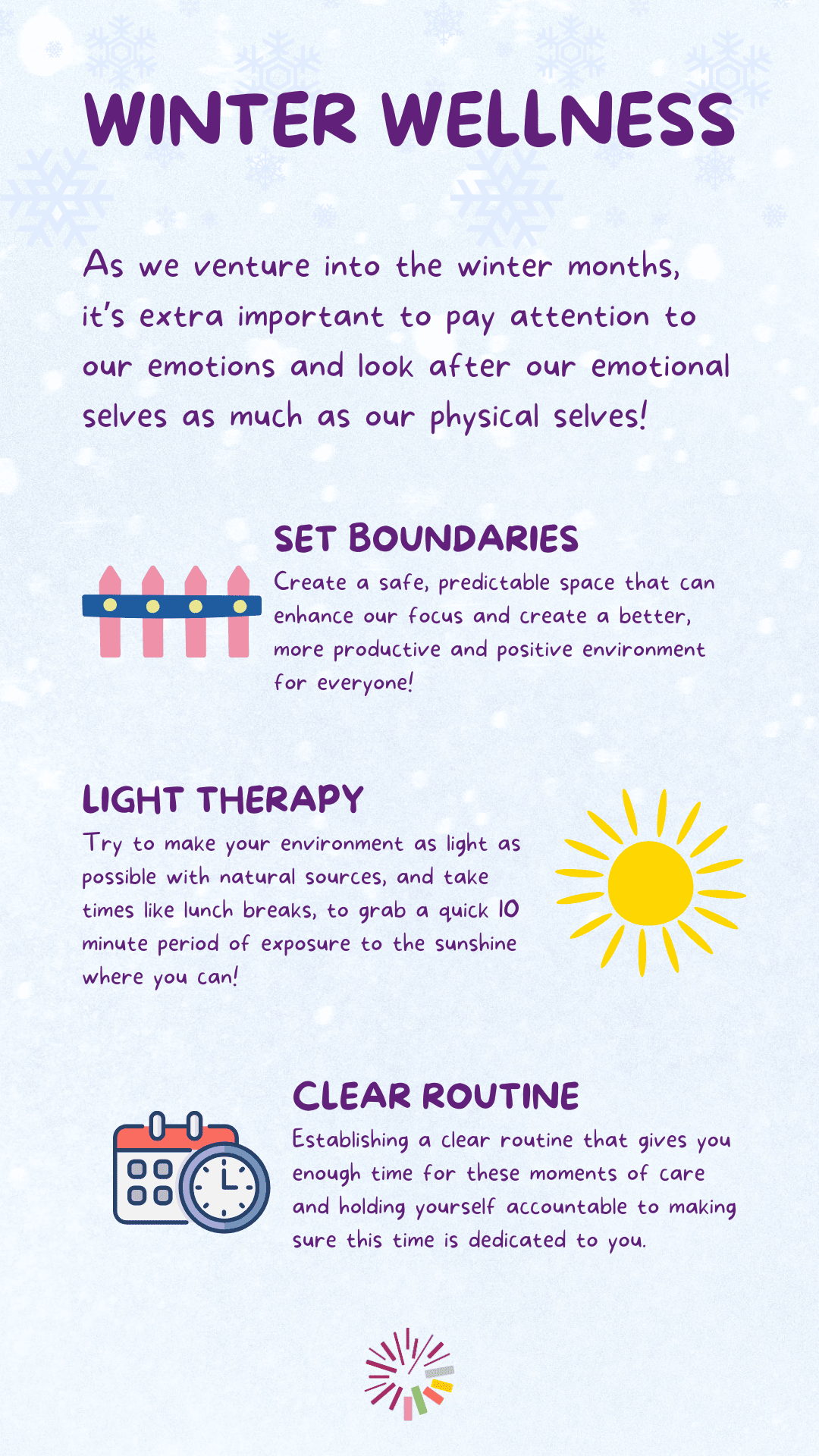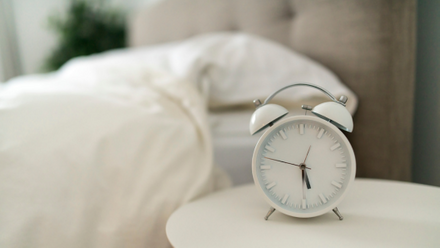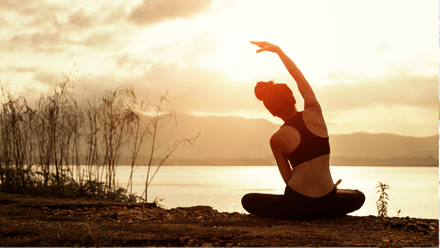Winter wellness
When the days get cold and dark, it can be tricky to remain energised and positive in the same ways as we might when it is sunnier and warmer in the summer months. Seasonal Affective Disorder (SAD) is a common type of depression that is impacted by the changes in season. It affects approximately 1 in 20 of us, with those aged between 16 and 35 being more likely to be affected.
So, as we venture into the winter months, it’s extra important to pay attention to our emotions and look after our emotional selves as much as our physical selves!

Top tips for winter wellness
Set boundaries
Stress contributes to our overall sense of wellbeing considerably, not limited to our mental health, but also as a contributing factor to many physical ailments too. It’s important to set boundaries and limits within all spheres of life, such as work and family, to create a safe, predictable space that can enhance our focus and create a better, more productive and positive environment for everyone!
Light therapy
A deficiency in Vitamin D, sourced from sunlight, can also contribute to a negative impact on our mental health and general wellbeing. Light therapy can be used as a way to navigate this potential deficiency. As early education and care professionals, this is particularly relevant as many of us work indoors a lot of the time and will often start the day in darkness and leave in darkness too.
Try to make your environment as light as possible with natural sources, and use times such as lunch breaks, to get a quick 10-minute exposure to the sunshine where you can!
Establish routine
When it’s colder and darker, it can be difficult to find the motivation to get up and go for a walk, or even take five minutes for a mindful brew. Establishing a clear routine that gives you enough time for these moments of self-care making sure you dedicate some time for ‘you’.





